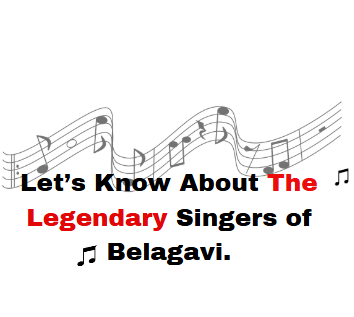
Belagavi City is a culturally rich city in Karnataka which is well-known for its deep rooted tradition, devotional compositions and legendary singers of Belagavi. The city continues to nurture the young musical talents with its music and remains a place where the echoes of the legendary singers of Belagavi continues to inspire new voices.
Meet the legendary Singers of Belagavi
Vidushi Gangubai Hangal:
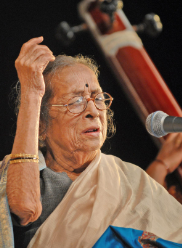
Vidushi Gangubai Hangal was an Indian singer and one of the legendary singers of Belagavi of the Khayal genre of Hindustani Classical Music from Karnataka State.
Early Age and Career:
Vidushi Gangubai Hangal was born in 5th March,1913 In Dharwad. She was a daughter of Chikkurao Nadiger, an agriculturist and Ambabai, a vocalist of Carnatic Music.
Hangal received only elementary education and her family shifted to Hubli in the year 1928 so that Gangubai could study Hindustani Music. She was known for her deep and powerful voice and belonged to the Kirana Gharana and is well known as one of the legendary singers of Belagavi .
At the age of 13, she began to train formally with Krishnacharya Hulgur, a Kinnari player, which is a stringed instrument like a veena while studying in Hindustani. From Hulgur, Gangubai learned 60 compositions in just one year, before he stopped teaching her after an argument over fees.
She continued her learning from Dattopant Desai before studying under Sawai Gandharva, a respected guru from Belagavi. However, Hangal could only study sporadically under Gandharva when he returned to his home, but received an intensive training of three years after he relocated permanently to Hubli.
At the age of 16,Hangal married to Gururao Khaulgi, a brahmin Lawyer and had 2 sons, Narayan Rao and Babu Rao, and one daughter Krishna Rao.
Hangals mother was considered to be of low social status and for women of her generation wasn’t considered appropriate employment. Meanwhile, Hangal struggled against this prejudice and made a career.
In the year 1945, she performed all over India and for All India Radio Stations.
During her Initial days, Hangal had performed light classical genres, including bhajan and thumri, but eventually concentrated on Khyal. Later, she refused to sing light classical, saying she sings only Raga. Hangal also served as a honorary music professor of the Karnataka University.
In the year 2006, she gave her last concert in March to mark her remarkable 75th career year. Krishna Hangal, her daughter, would often provide her vocal support in concerts. Krishna Bai Hangal who predeceased her more famous mother, was herself a performing musician who presented concerts. Krishna died from cancer at the age of 75 in the year 2004.
Timeless Songs of Vidushi Gangubai Hangal :
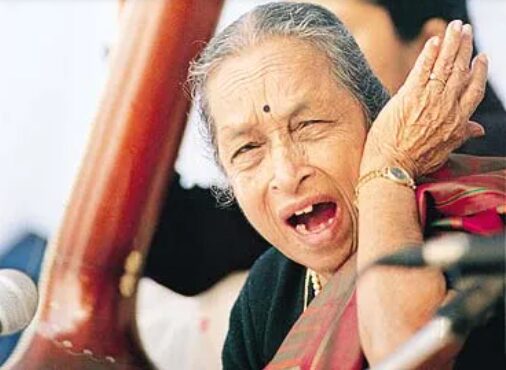
Vidushi Gangubai Hangal was a luminary of Hindustani classical music and one of the legendary singers of Belagavi, had left an remarkable legacy with her music’s and timeless performances through her career.
- Raga Yaman in the album “Ragas Ahir Bhairav, Adana and Yaman“.
- Raga Mian Ki Todi .
- Kanha Bajaj Aaj Bansuri .
- Toray Bina Naahen Chain.
- Aali Ree Albeli Sundar Naar.
Awards and Achievements:
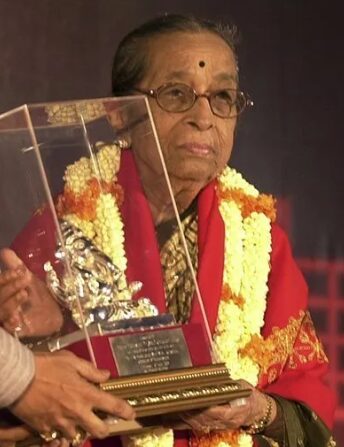
Gangubai Hangal ,one of the legendary singers of Belagavi has received a number of awards, which includes:
Karnataka Sangeet Nritya Academy Award, 1962:
This award was honored for her contribution to Karnataka’s classical music scene.
Padma Bhushan, 1971:
This award was honored to her as India’s third highest civilian award.
Sangeet Natak Academy Award, 1973:
This award was honored as the National recognition for excellence for excellence in music.
Sangeet Natak Academy Fellowship, 1996:
She was honored with the prestigious fellowship also known as the Academy Ratna Sadasya for her outstanding contribution to the performing arts.
Nadoja Award,1998:
This award was an honorary awarded from Kannada University, Hampi in the year 1998.
Padma Vibhushan, 2002:
The Padma Vibhushan was awarded to her in honor of the India’s Second Highest Civilian Award.
MILESTONES ACHIEVED:
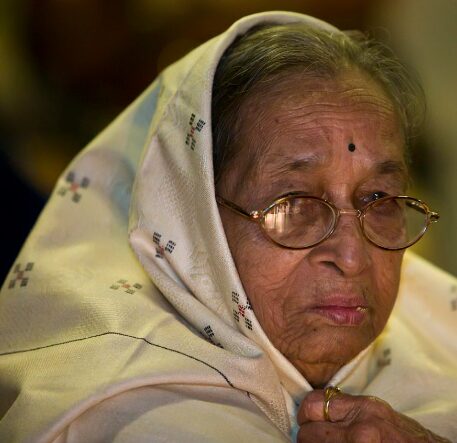
In 2008, The State Government of Karnataka decided to name the proposed Karnataka State Music University, Mysore after Gangubai Hangal.
Gangothri ,the birthplace of Gangubai Hangal has been converted into a museum by the Government of Karnataka.
Dr Gangubai Hangal Gurukul in Hubli trains young musician in traditional Guru-Shishya Parampara to become performing artists.
In September 2014, a postage stamp featuring Hangal was released by India Post commemorating her contributions to Hindustani music.
In the year 2003, Gangubai Hangal had been diagnosed and overcome bone marrow cancer and died of cardiac arrest at the age of 96, on 21st July, 2009 in Hubli in the place where she resided. Gangubai had her eyes donated to increase the awareness for organ donation. The Karnataka state government declared two days mourning for Hangal. A state funeral was announced for 22nd July in Hubli by the district commissioner of the Dharwad district.
Pandit Kumar Gandharva:
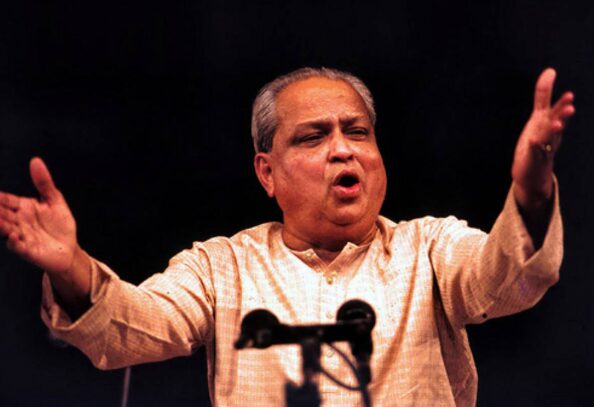
Pandit Kumar Gandharva originally known as Shivaputra Siddharamayya Komkalimath was an Indian classical singer and one of the legendary singers of Belagavi,well-known for his unique vocal style and for his refusal to be bound by the tradition of his gharana.
Early Age and Career:
Gandharva was born in Sulebhavi near Belagavi, Karnataka, India in a Kannada-speaking Lingayat family.
By the age of 5, he had already shown signs of a musical prodigy and first appeared on stage when he was at the age of 10.
When he was 11, his father sent him to study music under B.R. Deodhar, the well-known classical teacher. His mastery of technique and musical knowledge was so rapid that Gandharva himself was teaching at the school before he had turned 20. By his early 20s, Gandharva was seen as a star of music and was praised by scholars.
In the late 40s, he was stricken with tuberculosis and was told by doctors that he would never sing again. He was advised to move to the drier climate of Dewas, Madhya Pradesh for his health. For the next six years, Gandharva endured a period of illness and silence. Doctors told him that trying to sing could be dangerous for his health and that there was little hope of recovery.
In this period of time, the stories of Gandharva depict a man lying in bed and listening to the sounds of nature around him: birds, the wind, and passing street singers. They also detail how he would hum to himself, almost inaudibly. Hess speculates that this was the beginning of Gandharva’s radical new conception of the nirguni bhajan, which celebrates a formless (nirguna) divinity.
In the year 1952, streptomycin emerged as a treatment for tuberculosis, and Gandharva began to take it. Gradually, helped by excellent medical support and care from his wife Bhanumati, he recovered and started singing again. However, his voice and singing style would always bear the scars of his illness as one of his lungs had been rendered useless, so he had to adapt to singing with a single lung.
His first post-recovery concert took place in the year 1953. The illness greatly affected Gandharva’s singing in later years – he was popularly known for powerful short phrases and his very high voice.
Gandharva also experimented with other forms of singing such as Nirguni bhajans (devotional songs), folk songs, and with both ragas and presentation, often going from fast to slow compositions in the same raga. He is remembered for his great legacy of innovation, resulting in music in touch with the roots of Indian culture, especially the folk music of Madhya Pradesh. His innovative approach towards music led to the creation of new ragas from combinations of older ragas.
Vasundhara Komkali, Gandharva’s second wife and also his student, formed a memorable duo with him in bhajan singing. Sometimes, she provided vocal support to his classical renditions. Their daughter, Kalapini Komkalimath, would later accompany both her parents on tanpura.
Some of Gandharva’s musical philosophy is carried forward by his son Mukul Shivputra and daughter, as well as by students such as Madhup Mudgal, Vijay Sardeshmukh, and Satyasheel Deshpande. The Kumar Gandharva Foundation (Mumbai), formed by his student Paramanand Yadav, promotes the development of Hindustani music and Carnatic music. Gandharva’s grandson Bhuvanesh (Mukul’s son) has also made a name for himself as a classical singer.
Gandharva married Bhanumati Kans in 1946. She had enrolled as a student in B.R Deodhar’s school, and Gandharva was assigned as her teacher. The two fell in love, got married, and moved to Dewas in 1947. Soon after the move, Gandharva was stricken with tuberculosis, but with the help of new medicines, dedicated doctors, and Bhanumati’s nursing, he recovered.
Gandharva’s first son, Mukul Shivputra, was born in 1956. Their second son, Yashowardhan, was born in 1961 but Bhanumati died during the child-birth. Soon after her death, Gandharva married Vasundhara Shrikhande , another of his fellow-students at Deodhar’s school. Their daughter, Kalapini Komkali, is a noted vocalist.
For a long spell, Gandharva’s activities as a musician were managed by his friend and tabla accompanist Vasant Acharekar. Acharekar was Vasant Desai’s assistant in the 1950s but later devoted himself fully to his role as an accompanist to classical singing until his death in the late 1970s. Gandharva had friendly relations with the noted Marathi literary couple Pu La Deshpande and Sunita Deshpande.
Gandharva was a musicologist as well. During his illness, when he was advised complete rest, he spent time contemplating different aspects of music. He had his own thoughts about many different ragas, styles of rendition, and different types of composition.
Timeless Songs of Pandit Kumar Gandharva:
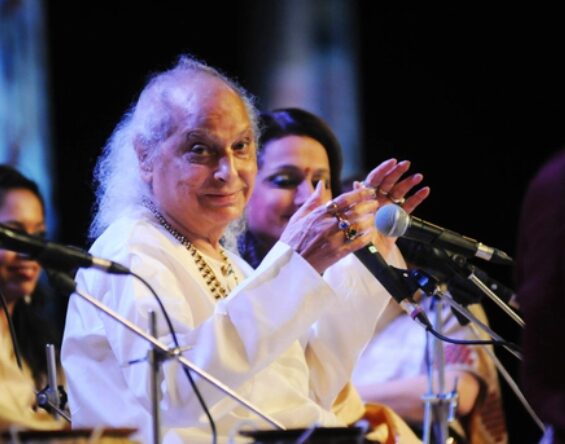
- Sunta Hai Guru Gyani , a renowned Nirguni Bhajan in the year 1992.
- Avadhuta Kudarat Ki Gat Nyari in the year 1992.
- Zhini Zhini Bini Chadariya featured in Nirguni Bhajans in the year 1978.
- Maya Mahathagini Hum Jaani in the year
- Naiya Naiya Mane and Begi Yar Sai A in the year 2006
Awards and Achievements:
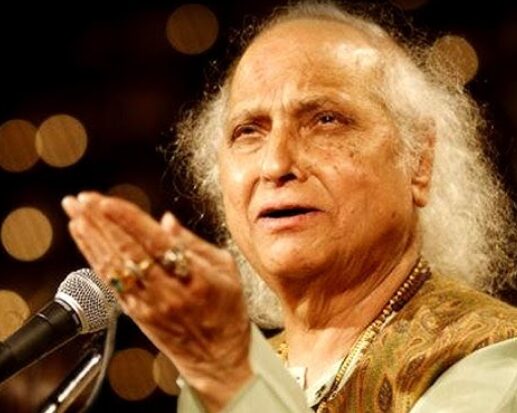
Padma Bhushan in 1977:
Gandharva was awarded the Padma Bhushan in 1977 which is one of the India’s highest Civilian honors for his contribution to music.
Padma Vibhushan in 1990:
Pandit Kumar Gandharva was awarded the Padma Vibhushan in 1990 to celebrate his exceptional contribution to Indian Classical Music.
Rashtriya Kumar Gandharva Samman in 1992:
The Rashtriya Kumar Gandharva Samman was established by the government of Madhya Pradesh in 1992 as an annual national honour presented to outstanding talent in the field of music.
MILESTONES ACHIEVED:
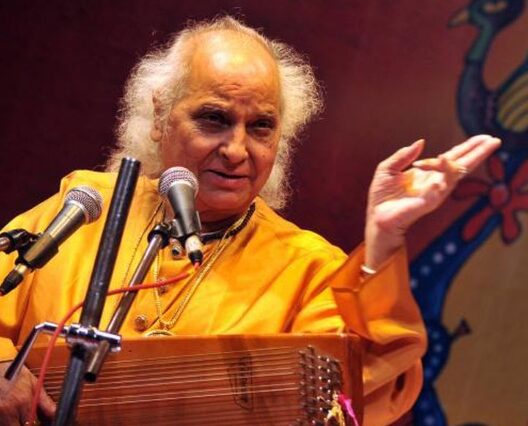
The last in the series of four movies in the Kabir Project by Shabnam Virmani features the life of Gandharva and his disciples, his career, and his journey into “Nirgun” singing. His song ‘Sunta Hai‘ forms the title of the movie ‘Koi Sunta Hai‘.
‘Hans Akela’ is a 78 minutes documentary on Kumar Gandharva made by Films Division of the Government of India, by interviewing is wife, friends, students.
‘Mukkam Vashi’ is a book made on notes collected during a two-day workshop of the same name. It collected together the thoughts of Gandharva on the nature of music at a fundamental level.
In September 2014, a postage stamp featuring Gandharva was released by India Post commemorating his contributions to Hindustani music.
Gandharva died on 12 January 1992 at his Dewas residence, Madhya Pradesh after a long history of lung infection ailment for decades. He was honored in the last rites together with full state honors and his funeral was attended by hundreds of music lovers from all over the country.
Balappa Hukkeri :
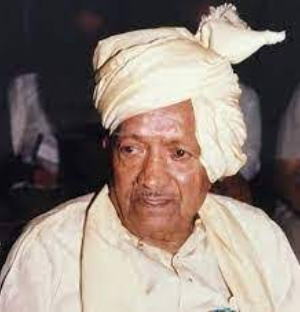
Balappa Hukkeri was a well-known singer of Indian folk songs and and one of the legendary singers of Belagavi , Bhavageetes in Kannada language and a freedom fighter in his early years.
Early Age and Career:
Balappa Hukkeri was born in Hukkeri, a small village in savadatti of Belagavi district, Karnataka in the year 1911. He was named after his musician uncle.
In his 30s, Balappa participated in Indian freedom movement. He was going from village to village singing patriotic songs for which he was arrested and jailed for about 6 months. He gave away family’s gold and silver to the National Security Fund during India’s war with China.
Balappa was drawn to theater at an early age due to family influence and started participating in local drama companies as an actor-singer. Even though he started training in Hindustani music by Shivalingiah Gavai, his interests were inclined towards lighter form of the music such as theater songs, Marathi abhangs, vachanas and folk songs.
However, he also worked as a field worker in the Department of Agriculture, travelling from village to village, singing songs on farming methods and family planning. During this time Balappa was drawn towards the writing of Navodaya writers in Kannada such as D.R. Bendre, Betageri Krishnasharma and Anandakanda and started singing Bhavageetes based on their poems.
Balappa’s singing style was unique mainly because of the way he wove both the elements of classical and folk traditions into it. He used to travel to remote villages in Karnataka and Maharashtra to collect folk songs. He never wrote down folk songs and knew hundreds of them by rote. During his singing career Balappa never used any other instrument but a Tabla and Harmonium for accompaniment. He is mainly credited for popularizing Sugama Sangeetha in North Karnataka and for his contribution as one of the legendary singers of Belagavi.
Timeless Folk Songs of Balappa Hukkeri:
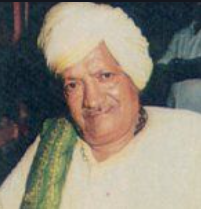
Balappa was fondly called as ‛Saavira Haadugala Saradara’ and made a significant contributions to Kannada Folk Music and Bhavageete as one of the legendary singers of Belagavi whose songs includes;
- “Elliruve Manava Kaaduva Roopasiye” in the 1976 Kannada Film Bavalu Daari.
- “JO Kuch Maine Churaya Hai” in the 1977 film Kanneshwara Rama.
Awards and Achievements:
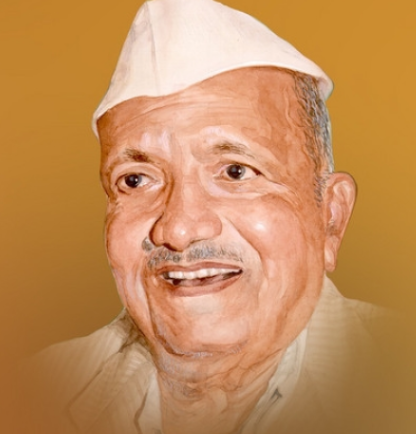
Balappa Hukkeri was recognized for his mesmerizing contributions to Kannada Folk Song and Sugama Sangeetha as one of the legendary singers of Belagavi and, awarded with several prestigious awards throughout his career which includes;
Sangeet Natak Academy Award (1980):
This award is a National Honor presented by India’s National Academy for Music, Dance and Drama by acknowledging his excellence in the field of folk music.
Karnataka Rajyotava Award (1986):
Karnataka Rajyotava Award was one of his Highest Civilian Award given by the government of Karnataka in the year 1986, for his immense contribution to Kannada Folk Music and Culture.
Tulsi Samman (1990-1991):
This award was awarded by the Government of Madhya Pradesh to honor his outstanding achievements in tribal, traditional and folk arts.
Balappa Hukkeri passed away in the year 1992,which marked the loss of one of Belagavi’s most influential folk musician and his work remained an inspiration for future generations of artists and music lover. His legacy continues through his songs and contributions to Kannada Folk songs.
However, the contribution of the legendary singers of Belagavi continues to inspire aspiring musicians and their mastery have ensured that Belagavi remains a guiding light of musical excellence.
VISIT FOR MORE: nammabelagavinews.com
